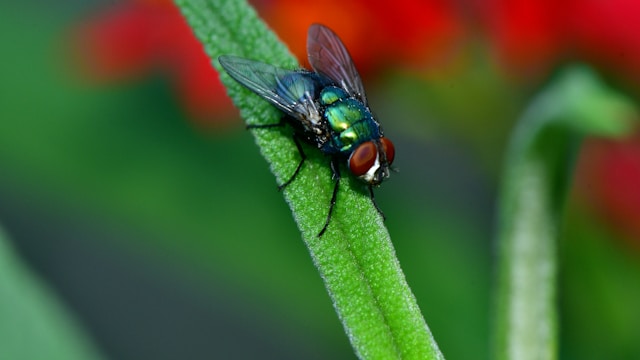Flies are bad!
Flies are everywhere on earth - everywhere we go, we can find them. Although they may seem harmless but irritating, they pose health problems, especially when they fly and crawl in your personal space. Understanding why they are bad, the dangers they pose, and why you should get rid of them, is crucial for a safe and hygienic environment. So, let’s take a closer look at these irritating creatures, their breeding habits, the diseases they carry, and why you should get professional help.
The problem
Forget about how annoying they are and see the genuine health hazard with them. They multiply at a rapid rate and have serious unhygienic habits, making them a threat to residential and commercial spaces.
1. Spread of disease
The more unsanitary an area, the better for the fly. They feed on decaying organic matter, garbage, and faeces. When they land on your food, surfaces, or utensils, they transfer harmful bacteria, viruses, and parasites through their feet.
Some of the diseases they transmit include:
· Salmonella
· E.coli
· Cholera and dysentery
· Typhoid fever
2. Disgusting hygiene
The presence of flies gives a feeling of uncleanliness, which could destroy a company’s reputation, especially when the company is in the food business. At a residential home, it could make guests feel uncomfortable and they might not visit again, never mind the possibility of getting really sick.
3. Rapid infestation
Did you know that flies reproduce at an alarming rate? One fly can lay up to 500 eggs in its lifetime in batches of 75 to 150 eggs. Depending on the environmental conditions, fly eggs can hatch in less than a day!
How flies multiply
If you’re wondering why flies are so hard to control – here is the life cycle of flies. They go through four stages: egg, larva or maggot, pupa, and adult.
Eggs: The fly lays eggs in decaying organic matter such as garbage, compost piles, or animal faeces.
Larvae: The eggs hatch within 24 hours and feed on the decaying matter.
Pupae: The larvae transform into pupae after five to seven days and develop a hard shell for protection.
Adults: Within 10 days, adult flies emerge and are ready to reproduce. The cycle can repeat in as little as seven to 10 days under ideal conditions, meaning a ‘harmless’ fly can be the start of a full-blown infestation.
Breeding grounds
Flies are not finicky, and they will breed wherever they can. Commonly breeding sites include:
· Garbage bins – make sure that all garbage bins are covered with a lid and clean them regularly.
· Animal faeces – pick up dog poop and discard them in closed garbage bins as soon as possible.
· Compost piles – cover them as much as possible.
· Rotting food – make sure that there is no leftover food anywhere and discard it in closed garbage bins.
· Moist areas – fix leaky pipes, clear stagnant water, and look out for other moist areas, like damp mops (clean them often).
Call the professionals
When you have done what you could but pesky flies won’t budge, it is better to call in professional pest control services, like Premium Pest Control, and here’s why:
1. Premium Pest Control will find the root cause of the fly problem and assess the size of the infestation.
2. Premium Pest Control will use the most effective treatment tailored to your problem, which could be a combination of solutions.
3. We will also help you to maintain a fly-free environment and give you professional advice and treatment for long-term prevention.
In a nutshell
Don’t wait for flies to become a health hazard in your home, office, or business environment – get the professionals to take the right action now. When we get rid of the annoying flies and create a long-term plan for you, you will thank us!

